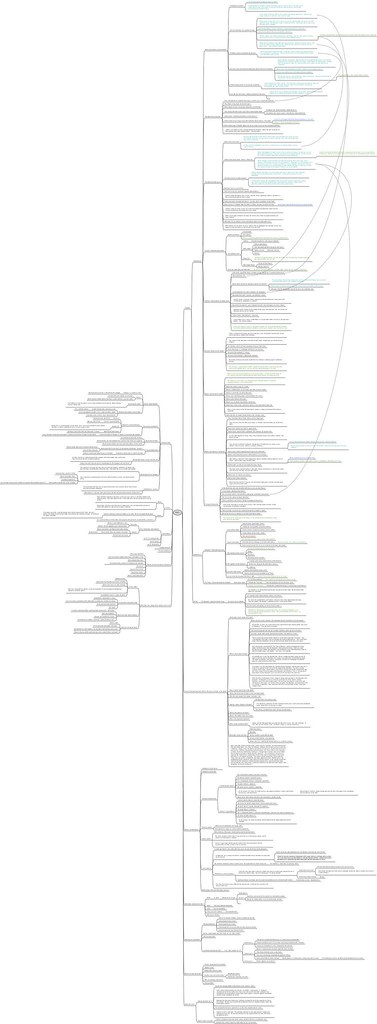I've listed all of the stories within the overarching story: there's a romance, a mystery, two competing succession plots, and some other stuff. For each of these, I've then outlined the general story arc for that plot: how it begins, develops, and resolves. Up to this point I have completed my first attempt. I'm now in the midst of the penultimate step: specifying the actual scenes that are needed for each of these story-chunks to take place. This is the right-most branch of the outline, and when I say specific, I mean specific. Each item contains complete instructions for writing the scene: where it takes place, who is in it, what happens and how.
I am still using Freemind to lay out the outline visually. Here's a picture. (I know the text itself isn't visible; this is just to give you an idea of how it's organized.)

The uppermost first-level node on the right is the sub-plots node. The bluish nodes in the far upper right are the actual scenes that I have worked out in detail, and the outline will be finished when all of the branches of the sub-plots node terminate in at lease one scene (or as many as needed). In addition to this outline, this diagram includes various pieces of brainstorming, notes about the setting, and color-coded notes about the purpose of different scenes, extra details, unanswered questions, etc.
Each level of this process has required a different way of thinking about the story. As I listed out the sub-plots, I found that I had to think hard about the over-arching themes of the story. As I then filled in the story for each sub-plot, I noticed areas where there was not going to be sufficient suspense or interest, meaning that other sub-plots had to be added or further elaborated to fill in the gaps. Now that I'm working on the individual scenes, I have to get into the guts of things. I'm working out details of the setting, supporting characters, and the nitty-gritty specifics of how the characters carry out their schemes.
The very last step will be to put the scenes in order, making explicit the interleaving of all the subplots.
Is this how pros do it? Probably not. Obviously, I'm still figuring out what method of plotting a novel works for me. If this method seems overly technical or hyper-analytical...well, maybe I find that comforting. I don't think I could do this at all without breaking it down into smaller and smaller questions.




JJ - wow! That outline is incredible!
ReplyDeleteI'm thinking of using the program for my diss now.
Thanks!
ReplyDeleteI find it to be a great program so far. If this isn't 100% obvious, each branch of that outline can be collapsed by clicking on it, so you don't have to deal with the whole thing at once. It's quite easy to navigate and edit the tree using only the keyboard. There are a number of options for exporting the map--I exported to .jpeg to get this picture, and you can also do PDF and html and some other stuff. Although it's freeware, I've so far found it to be relatively stable, although it did freeze once when I tried to cut and paste a big section of the tree, so these days I try to always save before trying that kind of thing. But yeah, overall I endorse it.
Holy crap! I hope this is going to be a freakin' epic novel because that outline surely is.
ReplyDeleteJJR,
ReplyDeleteI've nevertold you this, but I LOVE reading your blog posts. Good balance of wit, self-deprecation and I always learn something new!
Aww, thanks Dan!
ReplyDelete